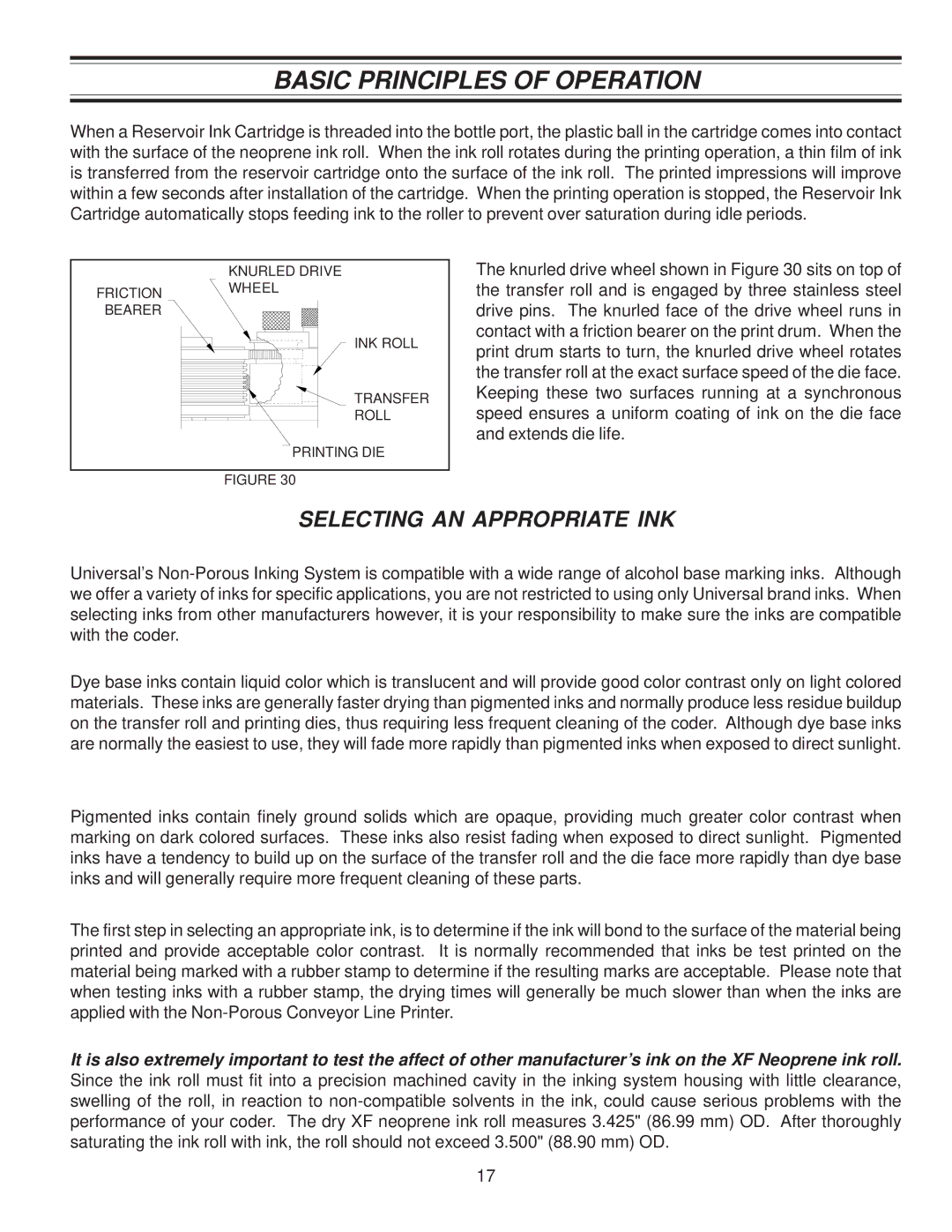
BASIC PRINCIPLES OF OPERATION
When a Reservoir Ink Cartridge is threaded into the bottle port, the plastic ball in the cartridge comes into contact with the surface of the neoprene ink roll. When the ink roll rotates during the printing operation, a thin film of ink is transferred from the reservoir cartridge onto the surface of the ink roll. The printed impressions will improve within a few seconds after installation of the cartridge. When the printing operation is stopped, the Reservoir Ink Cartridge automatically stops feeding ink to the roller to prevent over saturation during idle periods.
KNURLED DRIVE
FRICTION WHEEL
BEARER
INK ROLL
TRANSFER
ROLL
PRINTING DIE
FIGURE 30
The knurled drive wheel shown in Figure 30 sits on top of the transfer roll and is engaged by three stainless steel drive pins. The knurled face of the drive wheel runs in contact with a friction bearer on the print drum. When the print drum starts to turn, the knurled drive wheel rotates the transfer roll at the exact surface speed of the die face. Keeping these two surfaces running at a synchronous speed ensures a uniform coating of ink on the die face and extends die life.
SELECTING AN APPROPRIATE INK
Universal’s
Dye base inks contain liquid color which is translucent and will provide good color contrast only on light colored materials. These inks are generally faster drying than pigmented inks and normally produce less residue buildup on the transfer roll and printing dies, thus requiring less frequent cleaning of the coder. Although dye base inks are normally the easiest to use, they will fade more rapidly than pigmented inks when exposed to direct sunlight.
Pigmented inks contain finely ground solids which are opaque, providing much greater color contrast when marking on dark colored surfaces. These inks also resist fading when exposed to direct sunlight. Pigmented inks have a tendency to build up on the surface of the transfer roll and the die face more rapidly than dye base inks and will generally require more frequent cleaning of these parts.
The first step in selecting an appropriate ink, is to determine if the ink will bond to the surface of the material being printed and provide acceptable color contrast. It is normally recommended that inks be test printed on the material being marked with a rubber stamp to determine if the resulting marks are acceptable. Please note that when testing inks with a rubber stamp, the drying times will generally be much slower than when the inks are applied with the
It is also extremely important to test the affect of other manufacturer’s ink on the XF Neoprene ink roll. Since the ink roll must fit into a precision machined cavity in the inking system housing with little clearance, swelling of the roll, in reaction to
17
